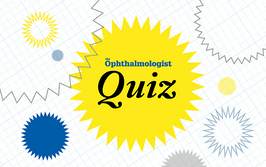Not Immune to Damage
Could activated T cells play a major role in driving neurodegeneration in glaucoma?
Glaucoma may be one of the leading causes of irreversible blindness worldwide but it is also one of the most mysterious. Elevated IOP might explain some of the pathology, but fails to explain glaucomatous damage occurring in patients with normal IOP – or in those whose IOP is maintained with therapy. As research teams the world over look to unravel the complex mechanisms driving the disease, a research group from Massachusetts Eye and Ear Hospital, Boston, MA, USA, have evidence suggesting another factor might be at play: autoimmunity.
In brief, the team found that increased IOP could induce stress on retinal neurons, leading to an elevated expression of heat shock proteins (HSPs), which, in turn, activates HSP-specific CD4+ T cells. Primed by commensal microbial flora, these T cells appear to induce progressive neurodegeneration. Dong Feng Chen, senior author on the paper (1), talks about their work.
The inspiration…
The work was started several years ago, when we first developed an inducible model of glaucoma in mice. We noted that a transient 2–3 week elevation of IOP resulted in progressive neuron loss even after the eye pressure returned to a normal range. This finding agreed with clinical observations that many glaucoma patients whose IOP was perfectly controlled would still undergo progressive vision loss. We began to speculate that elevated eye pressure triggered a long-lasting event, such as immune reactions, that contribute to vision loss. We thus looked for T and B cells in the glaucomatous retina and found T cells, which should not be present because eye is thought to be an immune privileged site.
Unexpected findings…
We were surprised that mere elevation of eye pressure for a short time can induce T cell infiltration into the eye and cause T cell-mediated attack to neurons. Second, we were surprised that mice never exposed to bacteria are completely free from getting the disease, which truly indicates that elevation of eye pressure is not the direct cause of glaucoma, but rather the immune responses that lead to neuron and vision loss.
In humans…
By examining human blood samples, we showed that patients with primary open angle glaucoma (POAG) exhibited five-fold higher levels of HSP-specific T cells compared with control subjects, suggesting that a similar mechanism underlies the disease process in humans. Though only a 2–3 week elevation of IOP is sufficient to induce HSP-specific T cell responses in mice, we do not yet know what duration in humans is required to induce a response. However, we speculate that at least some patients with normal tension glaucoma have had a transient elevation of IOP.
The impact…
We believe that our findings may lead to a future paradigm shift in both the diagnosis and management/treatment of glaucoma.First, though glaucoma causes permanent loss of vision, its early diagnosis has long been a challenge. Our finding may provide a potential biomarker for early diagnosis of the disease. Second, current therapies for glaucoma solely target reducing IOP, which slows vision loss rather than curing the disease. Our findings suggest new therapeutic targets, which may eventually lead to the cure of the disease.
Next steps...
Our goals are to develop and evaluate new interventions that target T cell or immune pathways for preventing vision loss in glaucoma. In collaboration with clinicians, we’d like to examine the possibility and potential of predicting disease development or progression by detecting abnormal or heightened T cell responses to HSPs.
- H Chen et al., “Commensal microflora-induced T cell responses mediate progressive neurodegeneration in glaucoma”, Nat Commun, 9, 3209 (2018). PMID: 30097565.













